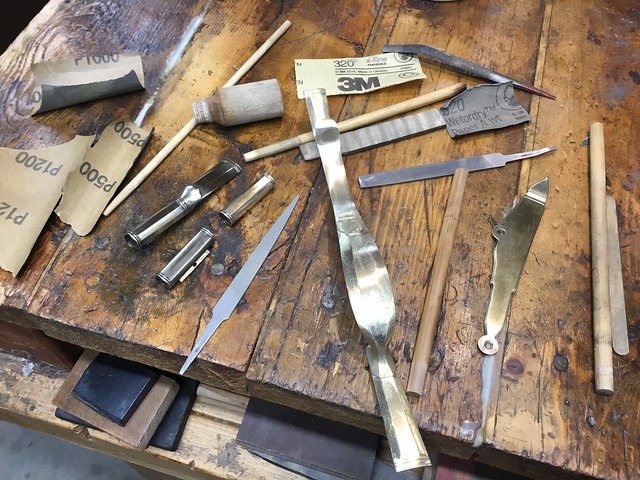Questions for those who build ...
I am considering building a flintlock pistol kit-specifically the Pendersoli Kentucky. I want .54 caliber, and I’ve only found that brand and a TOW kit that is considerably more expensive.
Are these my only two options for a flint in .54 caliber (to match my rifle)?
Secondly-this will be my first build. I’m comfortable with sanding, staining, assembly. I do not have wood carving experience or tools. I’m willing to learn a bit online, but am hoping for a kit that does not require a lot of shaping.
I have a dremel knock-off with assortment of sanding and buffing wheels. I have a pretty average collection of “homeowner” tools too.
Any advice on these or other kits? The Pendersoli is priced right and seems appropriate but I’m open to opinions form our more seasoned guys here.
I am considering building a flintlock pistol kit-specifically the Pendersoli Kentucky. I want .54 caliber, and I’ve only found that brand and a TOW kit that is considerably more expensive.
Are these my only two options for a flint in .54 caliber (to match my rifle)?
Secondly-this will be my first build. I’m comfortable with sanding, staining, assembly. I do not have wood carving experience or tools. I’m willing to learn a bit online, but am hoping for a kit that does not require a lot of shaping.
I have a dremel knock-off with assortment of sanding and buffing wheels. I have a pretty average collection of “homeowner” tools too.
Any advice on these or other kits? The Pendersoli is priced right and seems appropriate but I’m open to opinions form our more seasoned guys here.





 1031D69B-7BA6-486A-8578-CEA18D1B0D5D
1031D69B-7BA6-486A-8578-CEA18D1B0D5D